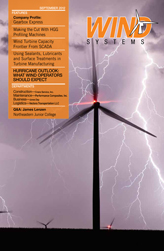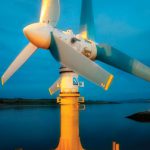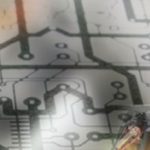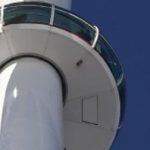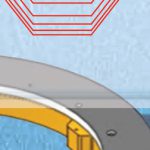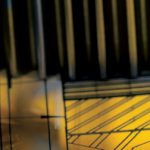Many 3D cutting jobs worldwide are done through HGG machinery. Founded in 1984, HGG Group is the world’s only company fully devoted to steel profile cutting, providing both tailor made machinery and knowledge to the highest standards. Their machines are sold worldwide to leading companies in the offshore, steel construction, process piping, shipbuilding and other industries. Figure 1
HGG profiling machines provide quality cutting according to the latest ISO standards, (ISO 9013) which enable easy operating, programming, industry specific customization, and durability. HGG manufactures bevel cutting machines that are particularly suited for processing large components. “We like challenges,” says Peter Tool, R&D manager at HGG. “Our greatest strength is that we design our systems and software from the bottom up – so we retain flexibility. Short channels of communication allow us to come up with completely new processes in very little time.”
Measuring Technique: The Key to Success
A German manufacturer of wind turbine components, EEW located in Erndtebrück Germany, placed an order with HGG. EEW wished to manufacture foundation structures, known as tripods, for an offshore wind farm using high quality steel. The task was to produce cylindrical members cut precisely in 3D from 400-ton, 60-meter long, 6-meter high steel tubes. HGG realized from this basic information that adopting the correct measuring technique would be key to the success of the project.
A tube weighing 400 tons deforms under its own weight when placed on the cutting machine. This deformation changes the diameter of a tube by up to 20 millimeters and leads to undesirable drifts. However, the changes in diameter are not constant; when the tube rotates on the cutting machine – the ovality changes with the movement of the tube. In addition, a 60-meter long tube sags several centimeters at mid-span between supports. The structural frame of the cutting machine itself also deforms while supporting this extremely heavy load. In the face of deformations like these, even the most accurate machines are incapable of delivering a clean cut. With tubes costing around 100,000 € (approximately $122,000USD) each, cutting errors cannot be allowed to happen. Therefore Tool and his team decided to integrate a measuring system into the cutting machine.
No Expensive Scrap
To address this challenge, the users needed to know the position of the tube relative to the cutting machine at all times. If the exact coordinates and deformation of the tube on the machine are always known, it is possible to continuously compensate for the movement of the cutting head thereby eliminating expensive scrap. Figure 2
Peter Tool quickly found a suitable method of control. He had become aware of the potential of laser trackers at an earlier trade show and recognized that there was no alternative to the range capability of laser metrology for the dimensions of the parts in the EEW project. HGG decided to couple the Leica AT901 Absolute Tracker to the cutting machine to ensure the necessary accuracy and adequate measuring range for the 60-meter long tubes. Their requirement necessitated the positioning of the measuring instrument in front of the tube. The typical measurement volume of the tracker can extend to 160 meters and no other laser tracker could offer the desired accuracy over the large distances.
Laser Tracker Monitors Cutting Head and Component
From the start, the company had one objective: the machine had to be capable of being properly operated by a single person. Therefore HGG fully integrated the laser tracker into the cutting machine so the operator does not even have to know how to use it. The instrument tracks several reflectors on the cutting head and on the tube. Every section of the tube is fitted with a reflector, which lets the cutting machine operator know how much the tube bends. The laser tracker supplies the coordinates of one point every 100 milliseconds. These coordinates are then fed back to the cutting machine software, which has also been configured to control the tracker – a task made possible by the programming interface of the system. Figure 3
HGG installed the new cutting machine in the EEW production facility in Rostock, Germany. Mounted on an 8-meter high platform, tracker monitors the movement of the cutting machine and the supported tube. This measuring system has to work in a very difficult environment. Components of these extreme dimensions and weights frequently give rise to vibrations. The tracker dealt with these issues without any problems and the dust created from the cutting operations did not adversely affect measurements. As Tool mentions, “Even with several millimeters of dust in the reflectors, they always continued to work perfectly.” Leica Absolute Tracker
Perfect for Wind Farm Infrastructure Dimensions
HGG developed a new type of bevel cutting system, which integrated the laser tracker to continuously monitor the cutting process. Using the measured data in the metrology-aided cutting system, the machine cuts the 60-meter long, 400-ton tubes into individual sections with an accuracy of 0.5 millimeters. Peter Tool is proud of this development, “Thanks to the Leica Absolute Tracker, the HGG machine is capable of cutting extremely large components such as those now in common use by wind turbine manufacturers. Our customer successfully performed this task with precision and reliability.”



















